Touchless Radio
High School Senior Project // Skills: Tangible Interactions, Physical Computing, Assistive Technology, Arduino, 3D-modeling, Differential Calculus
Exploration Space
As people age, many begin to lose their fine motor skills. While many modern products leverage the power of computers to better its user's experience digitally, many are still reliant upon traditional input methods such keyboards, buttons, and touch screens. Although these input methods are well defined-norm within today's HCI (Human Computer Interaction) landscape, these input methods are not how humans "naturally" interact with their physical world and often becomes a struggle for people with arthritis. The challenge for this project is to design and fabricate a physically computing radio that affords a more gestural input method within 8 days.
Prototyping: Form
Both analog and digital prototyping methods were used. Consideration for digital prototyping methods includes using a CNC router to subtractively fabricate the form. At the time of the project, the CNC router was broken, therefore I proceded with the analog method of wooden joineries.
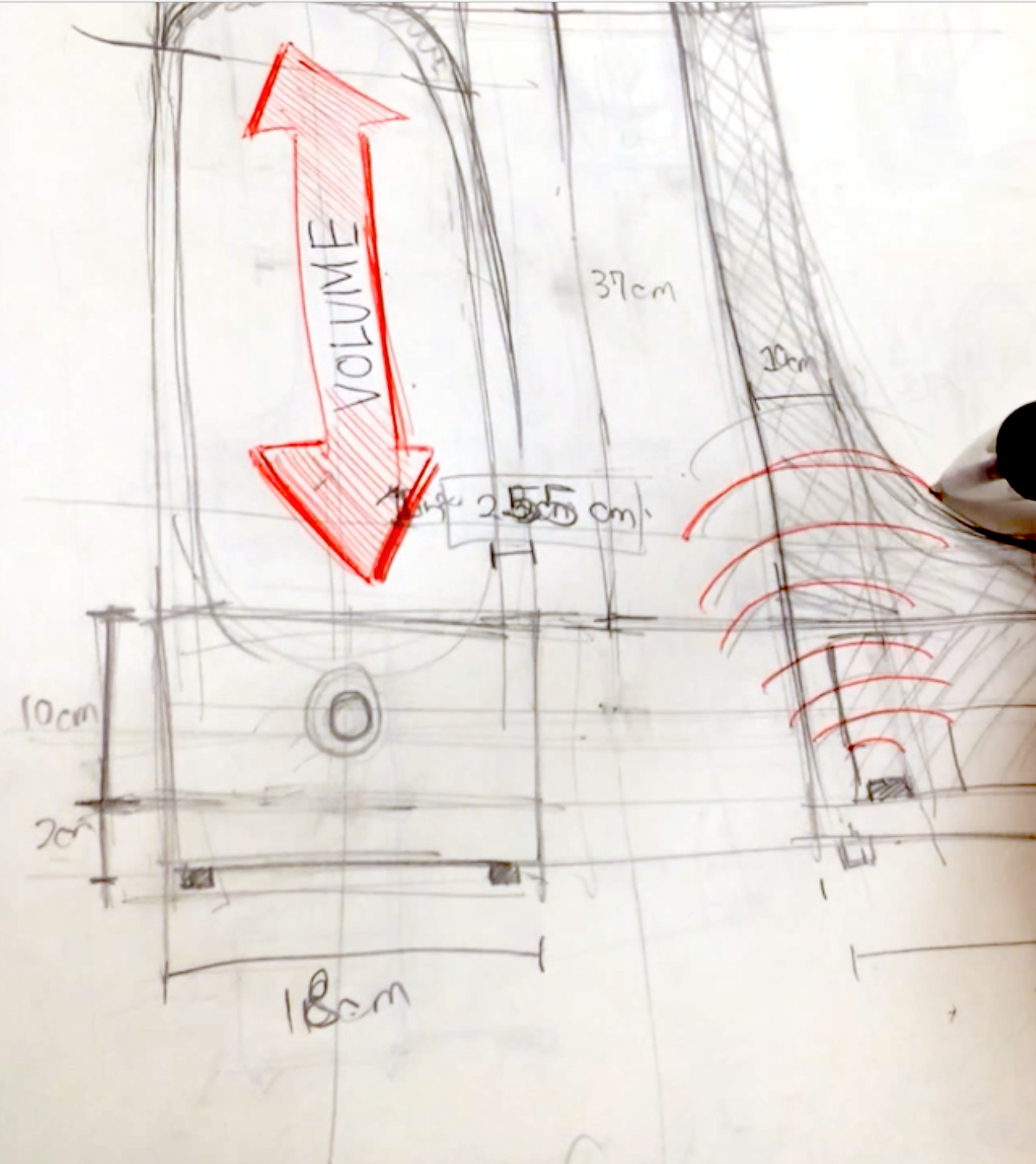

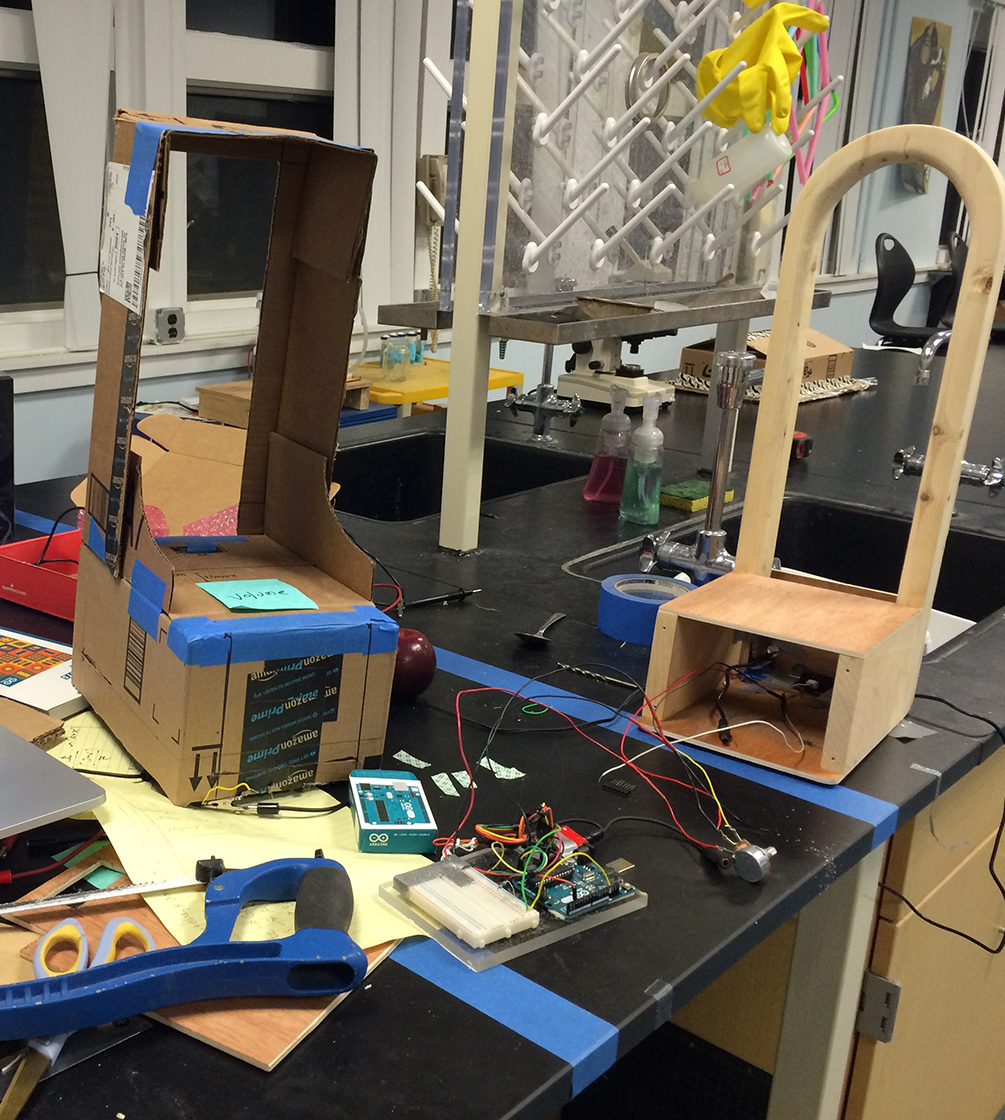
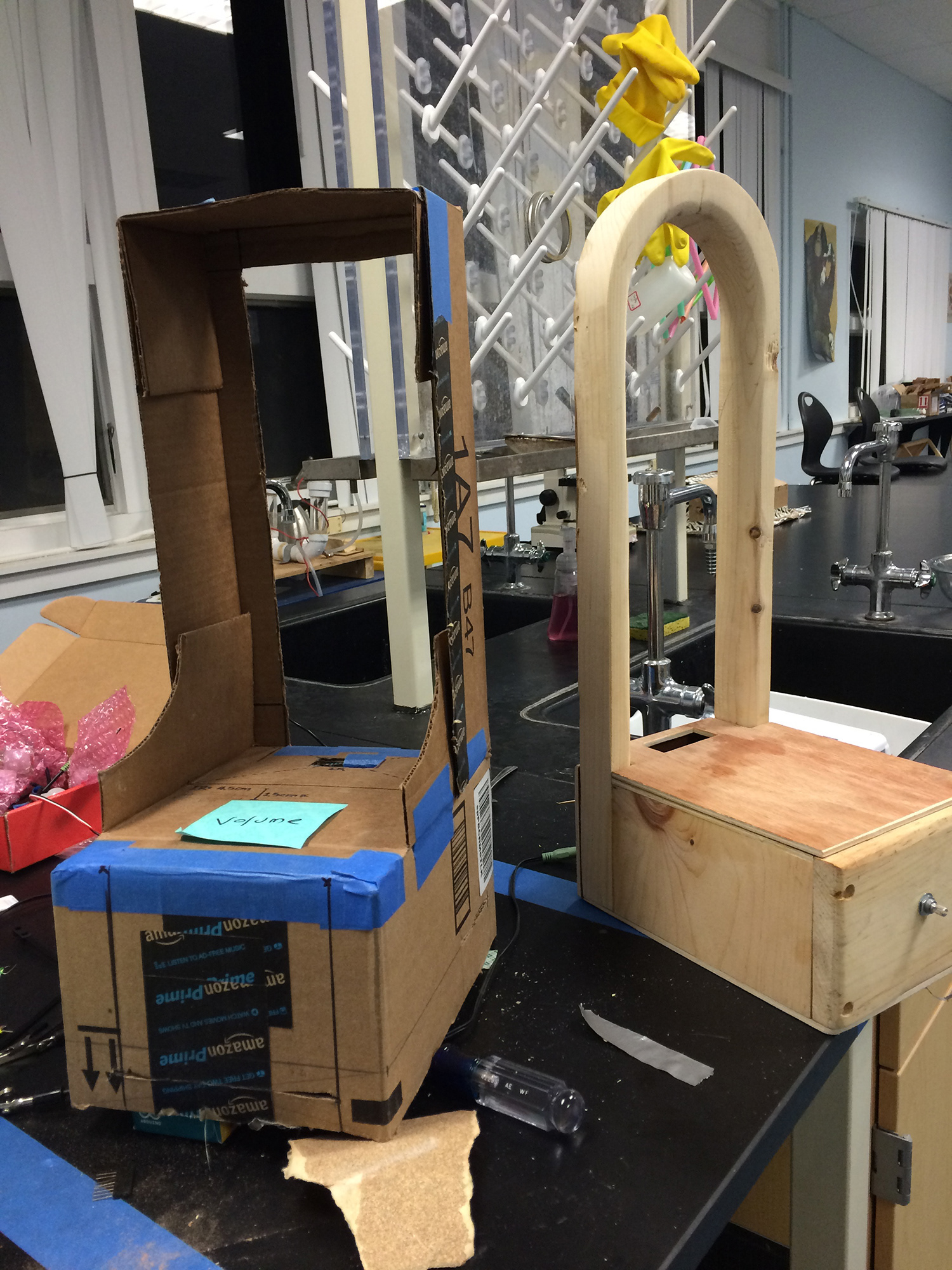
3D model for a CNC router.
Prototyping: Electronics
Pojects component includes: Infrared Proximity Sensor, Arduino Uno (Rev 3), Digital FM Radio Receiver, Rotary Potentiometer 100kΩ. All of these sensors and acutators can be sourced from Sparkfun.com
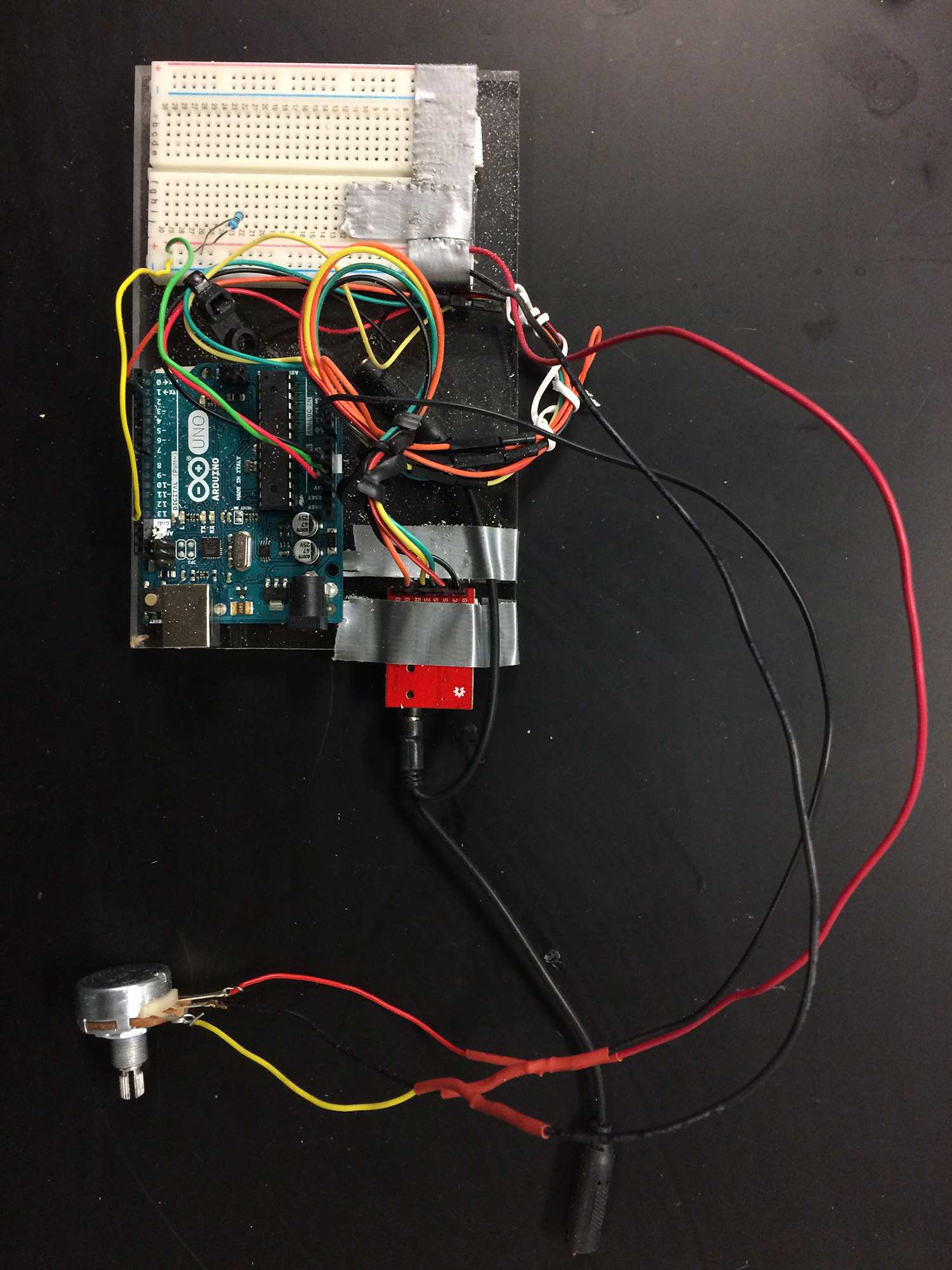
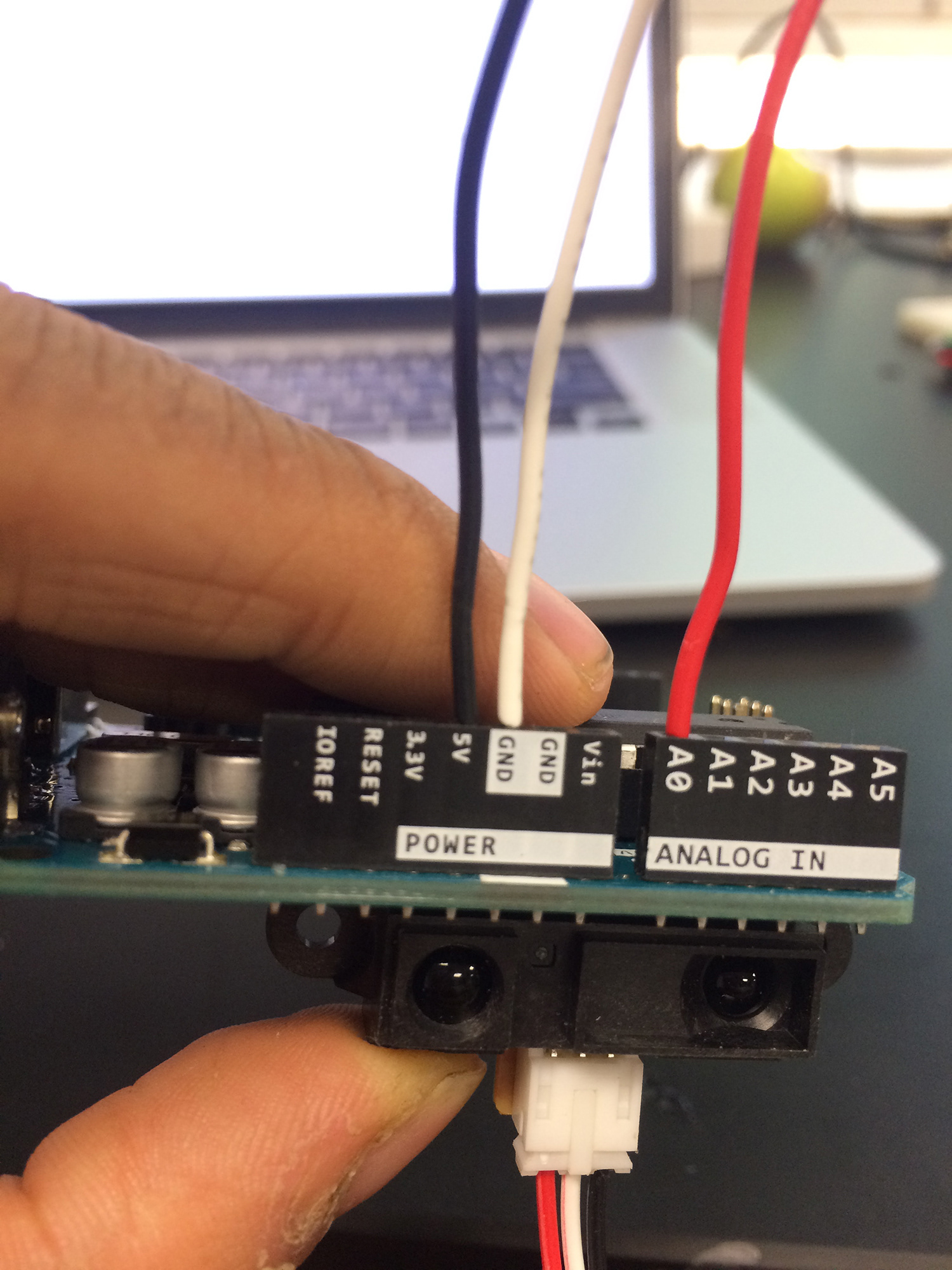
Circuit and infrared proximity sesnor.
Software: Fechner's Law and Derivative
Since the only signal that the infrared sensor is capable of outputting is the distance of the object it detects, this makes it a challenge for the sensor understand differences between the radio's ceiling and the user's hand was the main challenge. To solve this challenge, I setup a derivative with the infrared sensor's distance signal: d(position)/d(t)= ∆position; therefore when ∆position exceeds a certain threshold this means that the user's hand is removed. Once the Arduino understands that the user's hand is removed, it freezes the volume and stops the volume from fluctuating.
The volume output is also adjusted according to Fechner's law which states that "perceived loudness/brightness is proportional to logarithm of the actual intensity measured with an accurate nonhuman instrument".
Trying to set up a derivative so that the Arduino can detech hand removal.
Final Product:
The final product is fabricated from discarded wood around school. In order to foster the affordance of interacting with this radio, I filleted the inner edges of the arch with a router. Consideration was given to what is best way to tune and change the radio's channel. Certain gestural movements were experimented with, but none were intuitive therefore I settled with a classic radio knob. One gestural interaction in a radio is already pushing the design limits of "Too Advance yet Acceptable" principle, therefore another gestural interaction would have baffled and cause more confusion than delight with the user experience.
Conclusion:
The project was delivered within the tight time span of eight days. I tested the product by placing it in the school's art gallery (not the best place to place interactive work), and interestingly people still interact with it. Most people interact with the radio's knob first, and then started exploring the arch which lead to a delightful surprise of playing around with the volume with their hands. Sadly, due to the limited time frame I was unable to create an interaction that would gesturally afford changing radio channels.
Credits:
This project was completed in 8 days under the sponsorship of Kevin Feal-Staub, Bob Parks, and the Putney School Science Department. A special thanks to George Haggerty for helping me with the wooden frame last minute. Inspired by Josh Newby's undergraduate Experimental Form Project.